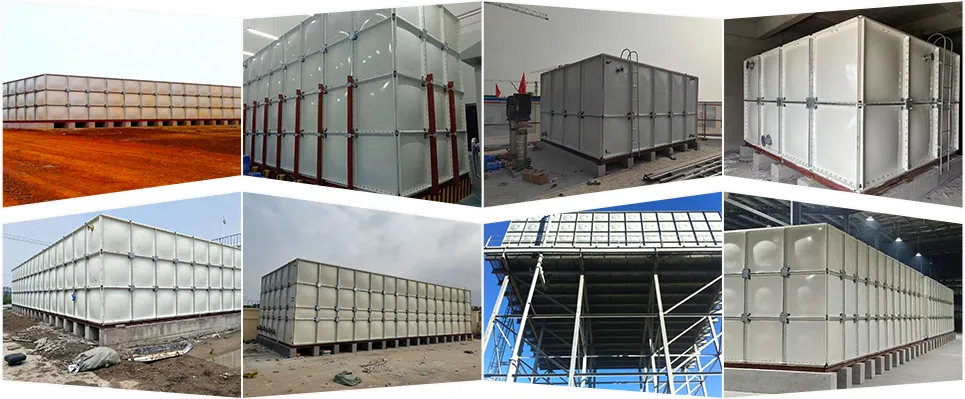loading...
- No. 9, Xingyuan South Street, Dongwaihuan Road, Zaoqiang County, Hengshui, Hebei, China
- admin@zjcomposites.com
- +86 15097380338
- Welcome to visit our website!
FRP Walkway Grating Solutions for Durable and Safe Pedestrian Pathways
FRP Walkway Grating An Innovative Solution for Modern Infrastructure
In recent years, the demand for durable and lightweight construction materials has increased significantly, particularly in the realms of industrial and commercial applications. Among these innovative materials, Fiber Reinforced Plastic (FRP) walkway grating has emerged as a frontrunner, garnering attention for its numerous benefits and versatility. This article aims to delve into the features, advantages, applications, and future outlook of FRP walkway grating.
What is FRP Walkway Grating?
FRP walkway grating is a type of grid-like structure made from a polymer matrix reinforced with fibrous materials, typically glass or carbon fibers. This composite material is highly resistant to corrosion, making it ideal for environments prone to chemical exposure, such as wastewater treatment facilities, chemical plants, and marine applications. The unique manufacturing process of FRP grating involves combining resin with reinforcing fibers, which results in a lightweight and strong product that can withstand significant loads while providing excellent structural integrity.
Benefits of FRP Walkway Grating
1. Corrosion Resistance One of the standout features of FRP grating is its unparalleled resistance to corrosion. Unlike traditional materials such as steel that deteriorate in harsh environments, FRP retains its integrity, thus increasing the lifespan of infrastructure and reducing maintenance costs.
2. Lightweight FRP grating is significantly lighter than metal alternatives, which simplifies transportation and installation. This characteristic not only reduces labor costs but also allows for easier handling, making it an excellent choice for overhead installations.
3. Safety Features Safety is a paramount consideration in any construction project. FRP walkway grating offers excellent slip resistance due to its textured surface, which helps prevent accidents in wet or slippery conditions. Additionally, the non-conductive nature of FRP makes it an ideal choice for electrical applications.
4. Design Flexibility The modular nature of FRP grating allows for customization in terms of size, color, and load-bearing capabilities. This flexibility enables designers and engineers to create tailored solutions that meet specific project requirements without compromising on performance.
frp walkway grating

5. Sustainability The manufacturing process of FRP can be more environmentally friendly than traditional materials. Many FRP products are made from recycled materials and can be recycled at the end of their lifecycle, contributing to a more sustainable construction industry.
Applications of FRP Walkway Grating
FRP walkway grating is widely used across various industries due to its versatility. Common applications include
- Industrial Facilities FRP grating is prevalent in factories and processing plants, where exposure to chemicals and other harsh conditions is common. - Water Treatment Plants It serves as walkways and platforms in water treatment facilities, providing safe access while withstanding corrosive elements. - Marine Environments Its resistance to saltwater and other corrosive agents makes it suitable for docks, piers, and other marine structures. - Waste Management In landfill and waste processing sites, FRP grating is used to construct safe walkways that resist deterioration from leachate and other harmful substances. - Recreational Areas Parks and other recreational facilities, particularly in wet environments, benefit from the slip-resistant and lightweight properties of FRP grating in walkways, bridges, and observation decks.
Future Outlook
As industries continue to innovate and look for materials that enhance safety, reduce costs, and are environmentally friendly, the market for FRP walkway grating is expected to expand. Emerging technologies in the manufacturing processes and advancements in fiber-reinforced compositions continue to improve the performance characteristics of FRP products.
Moreover, the integration of design software allows for better visualization and customization in the planning stages, enabling more efficient project completions and waste reduction. As environmental regulations become more stringent, the demand for sustainable construction materials like FRP will likely rise, further establishing its importance in modern infrastructure development.
Conclusion
In conclusion, FRP walkway grating represents a significant advancement in construction materials aimed at addressing the challenges faced by traditional options. Its corrosion resistance, lightweight properties, safety features, design flexibility, and sustainability make it a compelling choice across various sectors. As industries evolve and prioritize innovative and eco-friendly solutions, FRP grating is poised to play a pivotal role in the future of construction and infrastructure, setting new standards for safety and durability.
-
GRP Structures: The Future of Lightweight, High-Performance EngineeringNewsJun.20,2025
-
FRP Water Tank: High-Performance Storage for Corrosive and Clean Water SystemsNewsJun.20,2025
-
FRP Square Tube: The New Industry Standard for Chemical and Structural ApplicationsNewsJun.20,2025
-
FRP Pultruded Profiles: The Ultimate Choice for Lightweight Structural StrengthNewsJun.20,2025
-
FRP Handrails: The Safer, Smarter, and Stronger Choice for Modern InfrastructureNewsJun.20,2025
-
FRP Grating: The Smart Solution for Durable, Lightweight Industrial FlooringNewsJun.20,2025
-
Why Choose a Galvanized Water Tank for Your Storage NeedsNewsMay.21,2025
